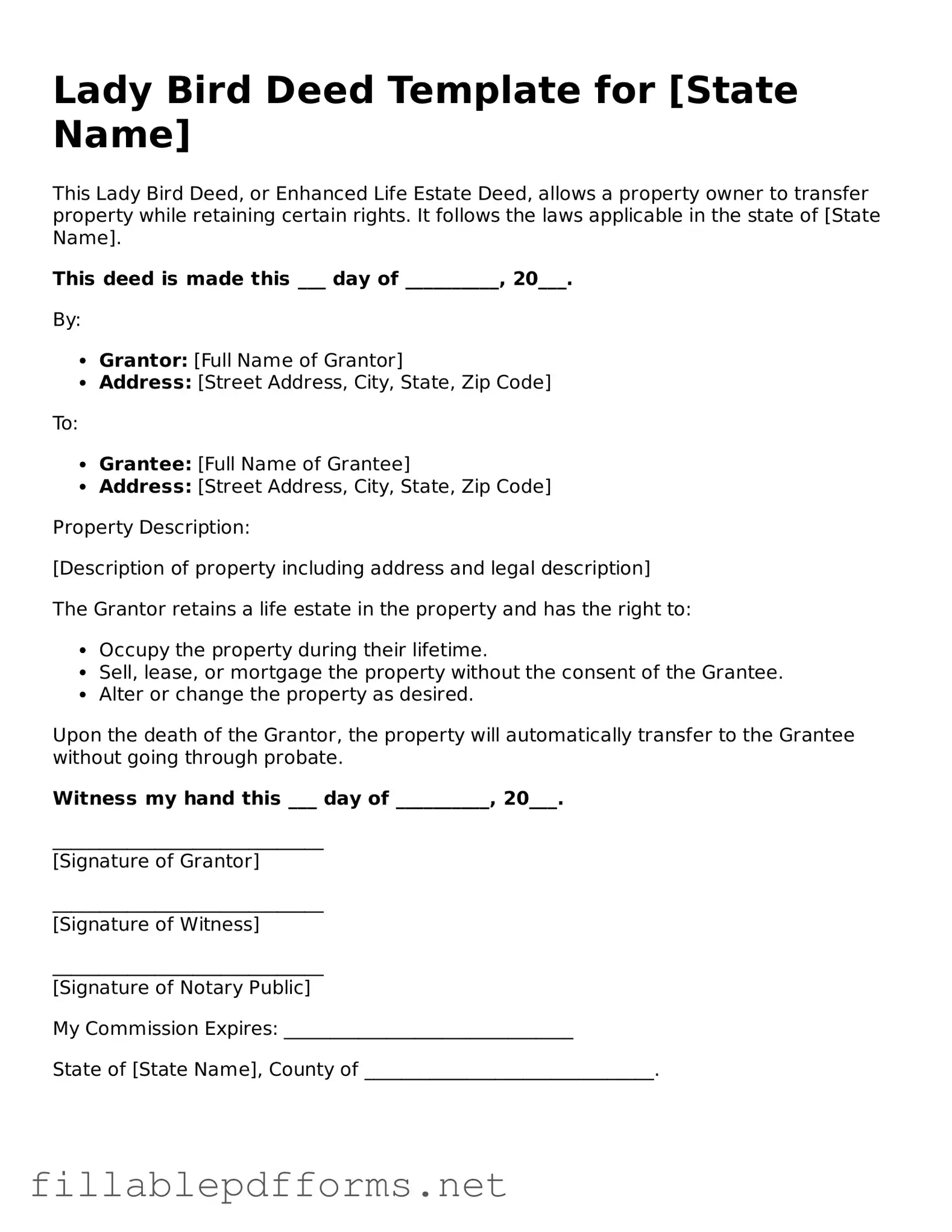The Lady Bird Deed, also known as an enhanced life estate deed, offers a unique way for property owners to transfer their real estate while retaining certain rights during their lifetime. This form allows individuals to maintain control over their property, enabling them to live in it, sell it, or even mortgage it without needing permission from the beneficiaries. Upon the owner’s passing, the property automatically transfers to the designated beneficiaries, avoiding the often lengthy and costly probate process. One of the major benefits of the Lady Bird Deed is its ability to protect the property from creditors, ensuring that it remains in the family. Additionally, it can have significant tax advantages, as the property receives a stepped-up basis, potentially reducing capital gains taxes for heirs. Understanding the intricacies of the Lady Bird Deed can empower property owners to make informed decisions about their estate planning, providing peace of mind for both themselves and their loved ones.
